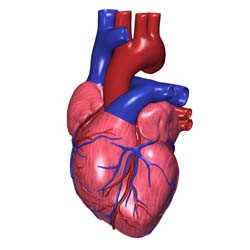Characterising Nav channels in the heart
Ion channels in the heart such as Nav1.5 are key regulators of cardiac rhythm initiation and propagation. Genetic mutations usually of hereditary nature such as Brugada syndrome cause dysregulation in ion channels resulting in potentially fatal arrhythmias. To identify the molecular and cellular mechanisms involved in regulating electrical excitation in the heart, scientists initiated the NAVEX project. NAVEX developed and applied a mass spectrometry-based proteomic approach for in situ investigation of Nav channel complexes at the molecular level. For the study, they immunoprecipitated Nav channel complexes and associated regulatory proteins from adult mouse cardiac ventricles. Several novel Nav channel regulatory proteins of were identified. Out of these, the Eps15 interacting protein 2, the Oxysterol-binding protein-Related Protein 11 (ORP11) and the plakoglobin were further analysed. Nav1.5 co-immunoprecipitated with each of these proteins, confirming their association with Nav1.5. Transient knockdown of ORP11 or plakoglobin expression in rat heart muscle cells did not reveal alterations in Nav1.5 total or cell surface expression. These results revealed the need for assessment of their biophysical properties. Scientists successfully realised the first ever in situ phosphorylation map of cardiac Nav1.5 channels. They identified eleven serine/threonine phosphorylation sites out of which eight were previously unknown. Ten sites were located in the first intracellular linker loop, indicating the importance of this region in Nav1.5 channel expression and function. Biochemical analyses of phosphomutants revealed two new serine phosphorylation sites involved in regulating Nav1.5 channels' cell surface expression. Findings were published in the Journal of Proteome Research. The cardiac Nav1.5 channel has proven to be a relatively effective target for anti-arrhythmic drug development. However, these channels had not been characterised until the advent of this project. NAVEX activities could provide the foundation for developing innovative preventive, diagnostic and therapeutic options. Project members also benefit as these findings place them in a competitive position to receive funding for future research projects.







